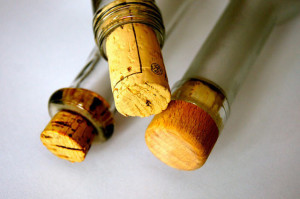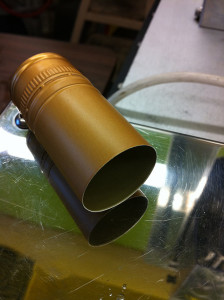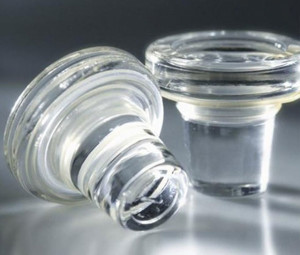Just a few years ago corks were considered the only appropriate way to “cork” a bottle of wine. Recent reports indicate that corks still cap 80% of wine bottles but many in the wine trade suggest that this is due to tradition rather than common sense. Caps and other closures are making headway into the cork majority.
 The use of caps was pioneered by two American brothers, Ernest and Julio Gallo following the end of Prohibition in 1933. They started from scratch. They took down all the wood staves in their wine tanks and used the lumber to build their homes, replacing those tanks with stainless steel ones.
The use of caps was pioneered by two American brothers, Ernest and Julio Gallo following the end of Prohibition in 1933. They started from scratch. They took down all the wood staves in their wine tanks and used the lumber to build their homes, replacing those tanks with stainless steel ones.
But after Prohibition, how many American homes had corkscrews? The answer is very few. So the Gallos introduced caps on all of their wines, which were mass-market wines that were labeled “Burgundy,” “Chablis,” and “Chianti.” They then invented a name for the caps-the Flav-R-ite” cap. Gallo was on its way to becoming the world’s largest winery.
However, caps have always been associated with “cheap” wine and even Gallo started using corks in the 1980’s when it moved its product lines into higher-price levels.
Caps have many advantages as a closure. They are easily opened and can be easily resealed without losing a drop. They also are low-cost to the producer. The majority of wineries in Australia and New Zealand use screw caps because they became “fed up” with the quality of corks supplied to them. And screw caps are now the recommended closures for aromatic white wines such as Riesling and Sauvignon Blanc. Some contend that there is not enough oxygen in screw cap wines to allow the wines to age, others contend this is more of a production problem rather than a bottle problem.
 One thing I have done is to allow screw cap wines to breathe a longer period of time before pouring them. I breathe them at least an hour in the refrigerator to enhance the bouquet and flavor. One can also store capped wines vertically, which one shouldn’t do with cork bottles.
One thing I have done is to allow screw cap wines to breathe a longer period of time before pouring them. I breathe them at least an hour in the refrigerator to enhance the bouquet and flavor. One can also store capped wines vertically, which one shouldn’t do with cork bottles.
So what happened to corks to allow other closures into the market?
The answer is tricloroanisole. This compound is found in cork bark and is responsible for the off or musty flavors that in restaurant terminology spell “corked.” At its worst, the smell is like cat urine on a newspaper.
The primary difference between corks and caps is that a cork is a semi-permeable membrane that allows small amounts of oxygen to enter the bottle while caps do not.
The cork industry has taken steps to improve the quality of its corks and the musty odors that inhabit the wine have been reduced to 1 in 30 bottles, according to the industry.
In addition, other types of cork and non-cork closures are available such as plast ic corks and agglomerate corks made from cork particles that have been sanitized. Corks have proven their worth in the long-term aging of wine. Perhaps that is why all the great wines continue to use corks, in addition to the “prestige” factor.
ic corks and agglomerate corks made from cork particles that have been sanitized. Corks have proven their worth in the long-term aging of wine. Perhaps that is why all the great wines continue to use corks, in addition to the “prestige” factor.
The “other” stopper that I like and see rarely is called the Vino-Lok, which is a glass stopper akin to a stopper on olive oil or vinegar carafes. The stopper has a neutral rubber seal that snaps the glass stopper securely to the bottle. The supplier, Alcoa, says it has come out with a sintered version that allows more oxygen to enter the bottle.
I see more and more wines going to screw caps and they are not inexpensive.
[Article by David Swartzentruber]



 0
0